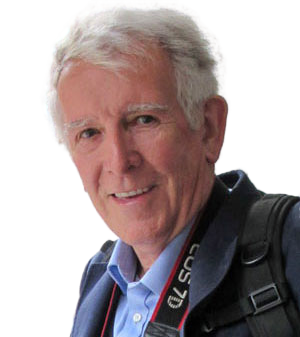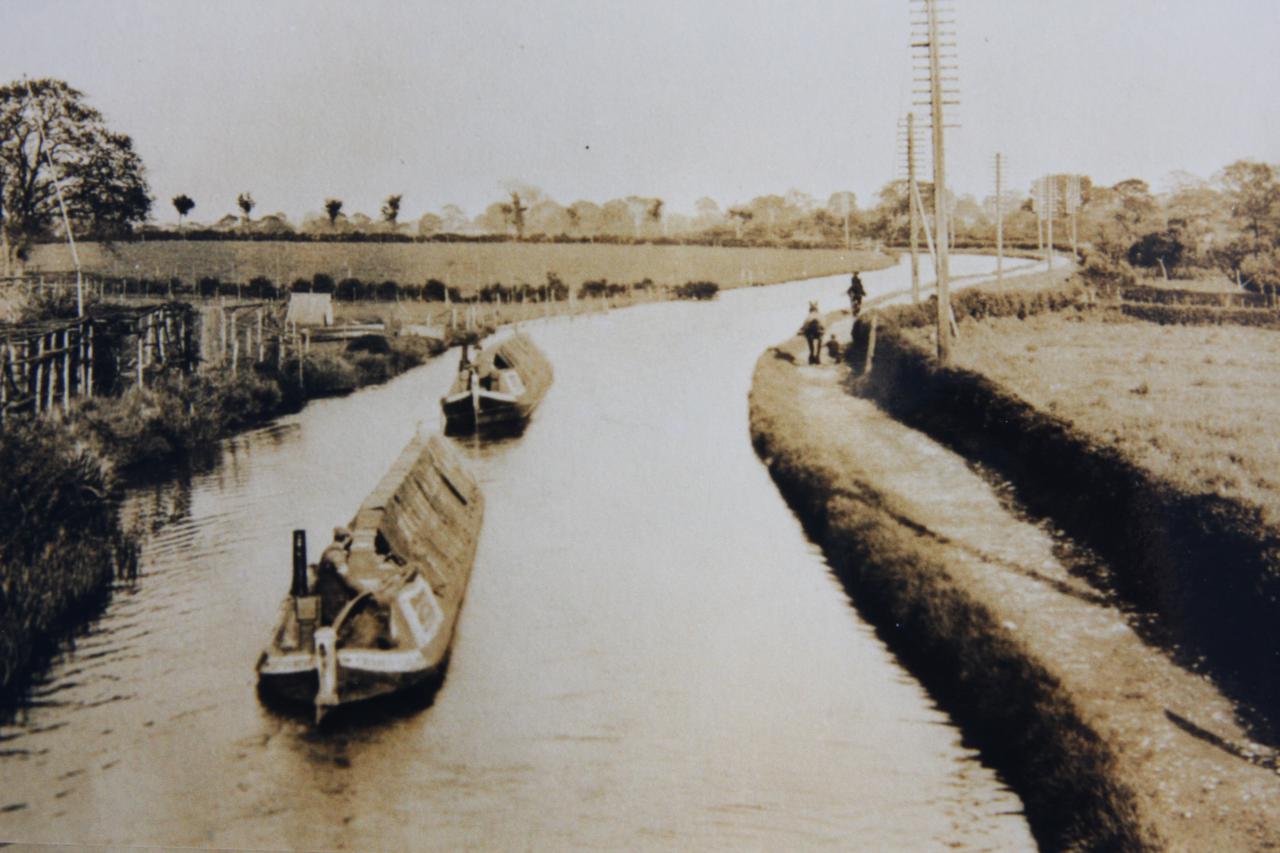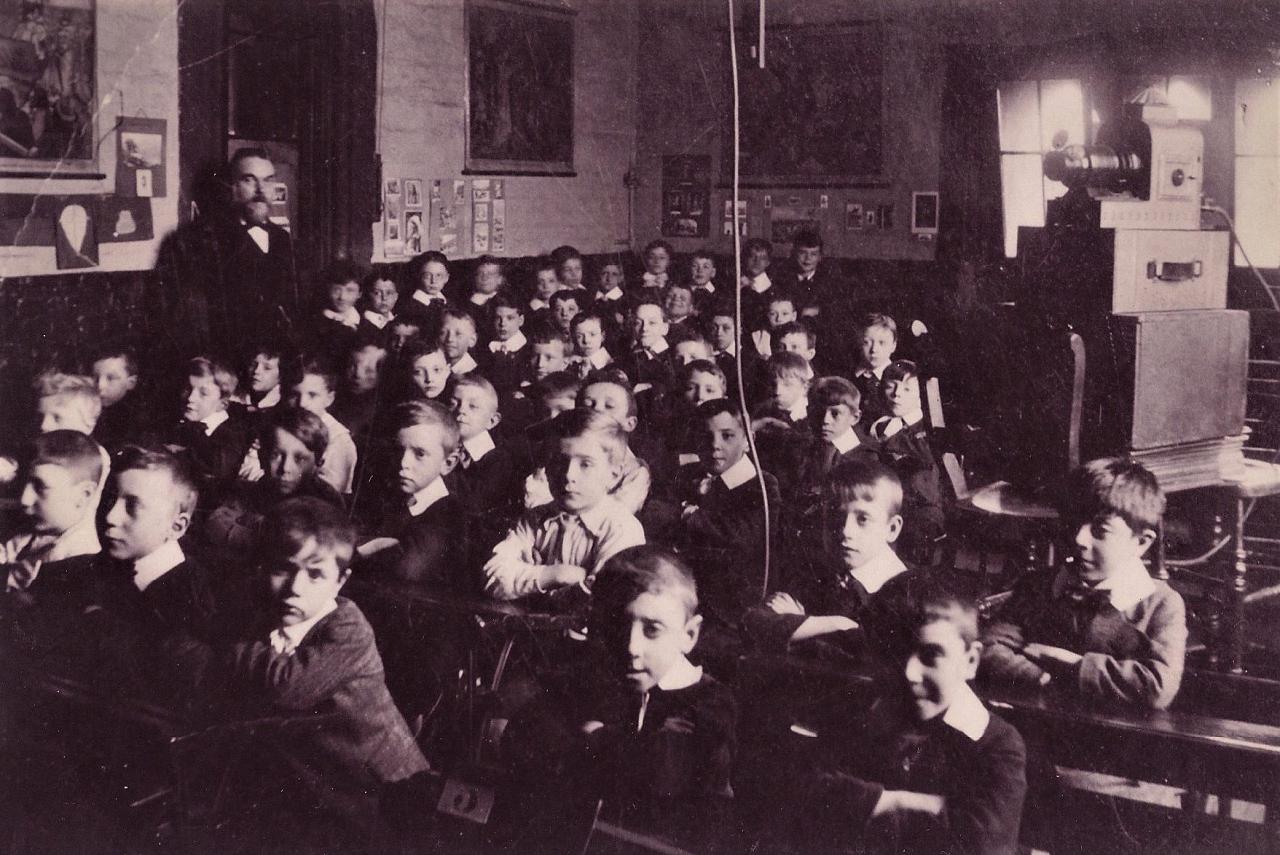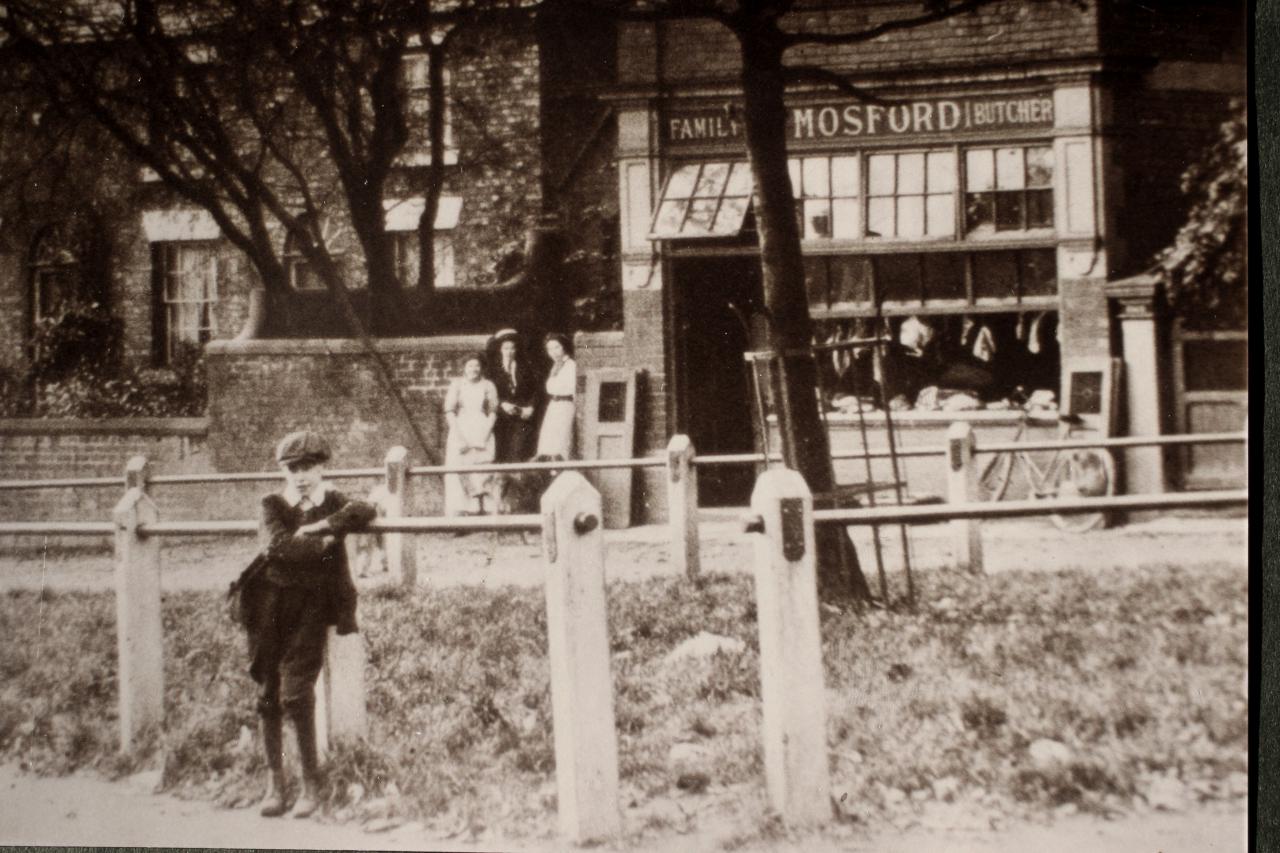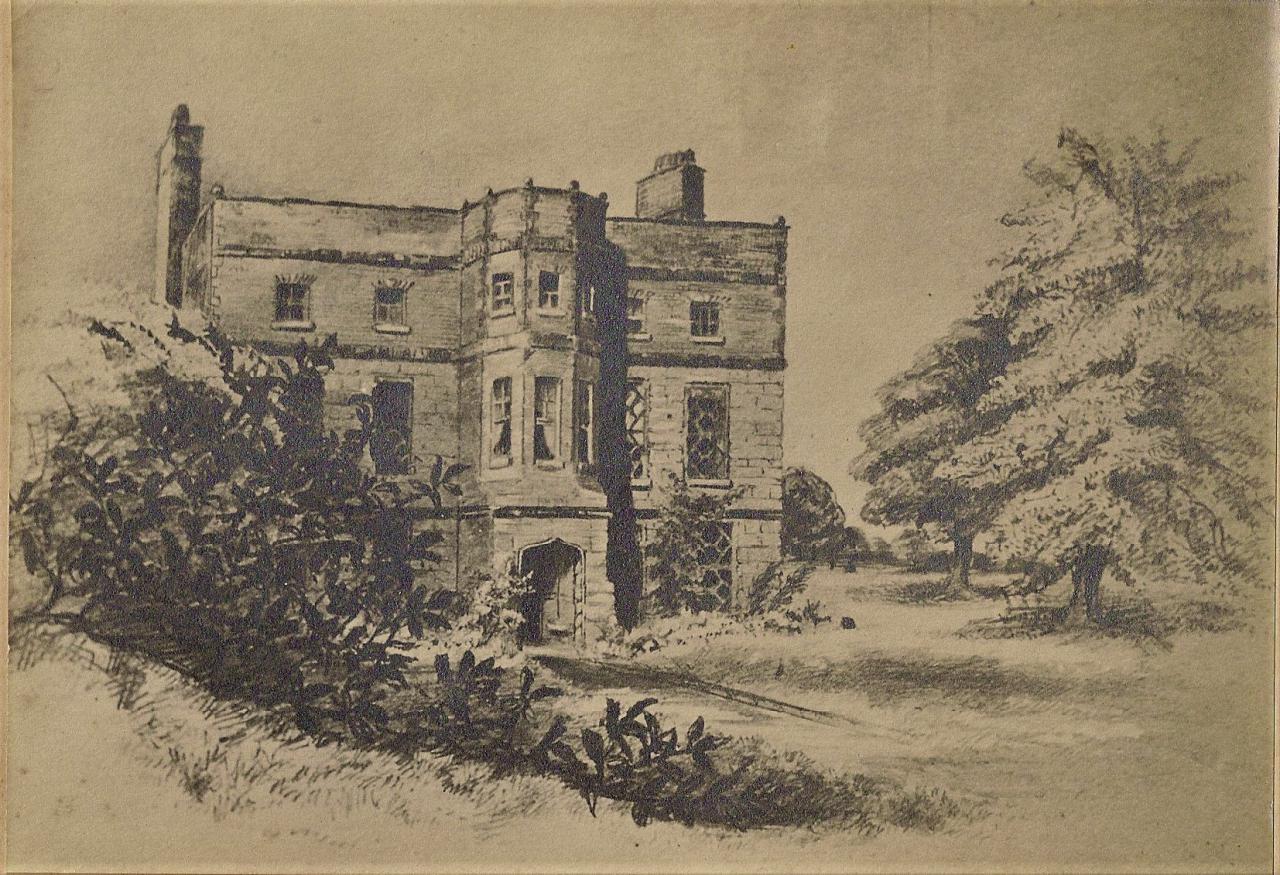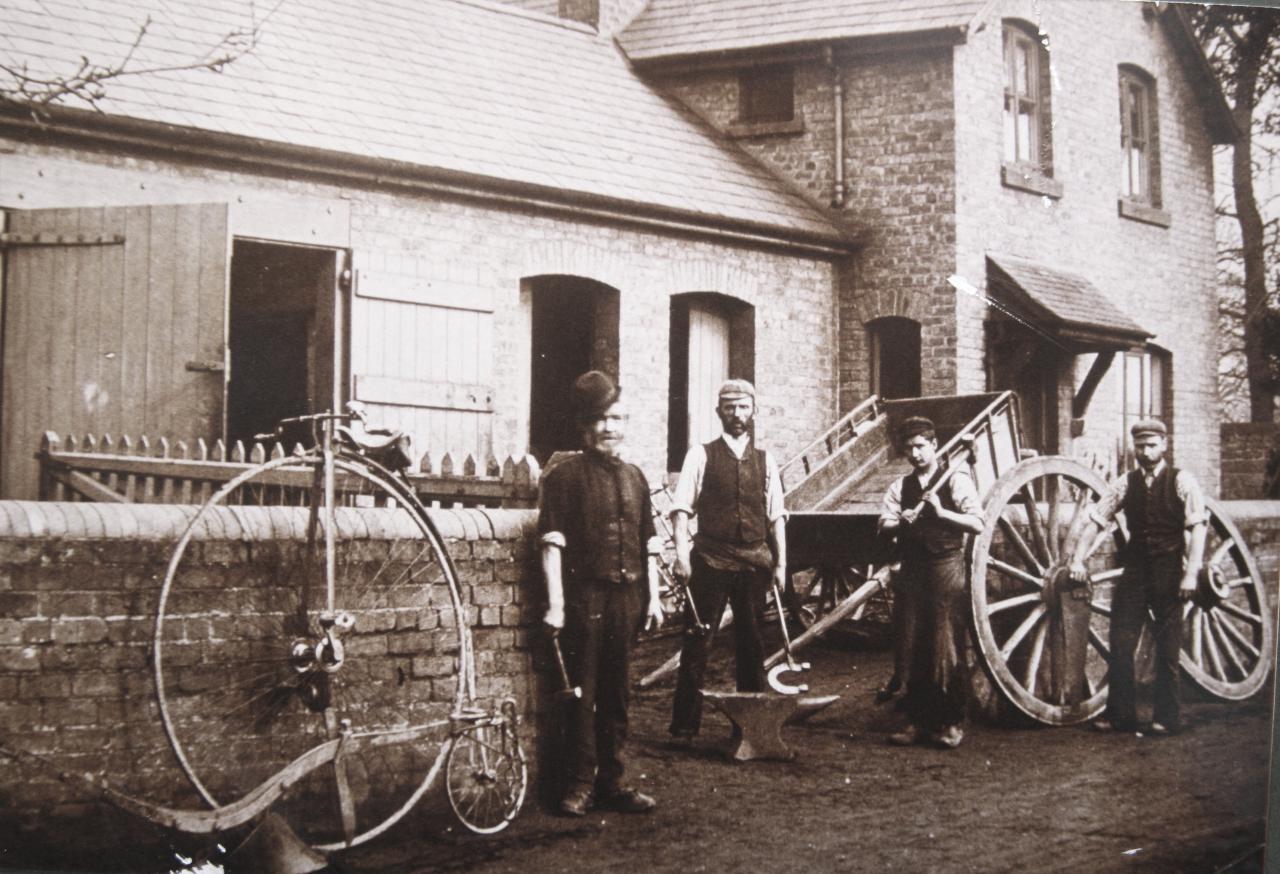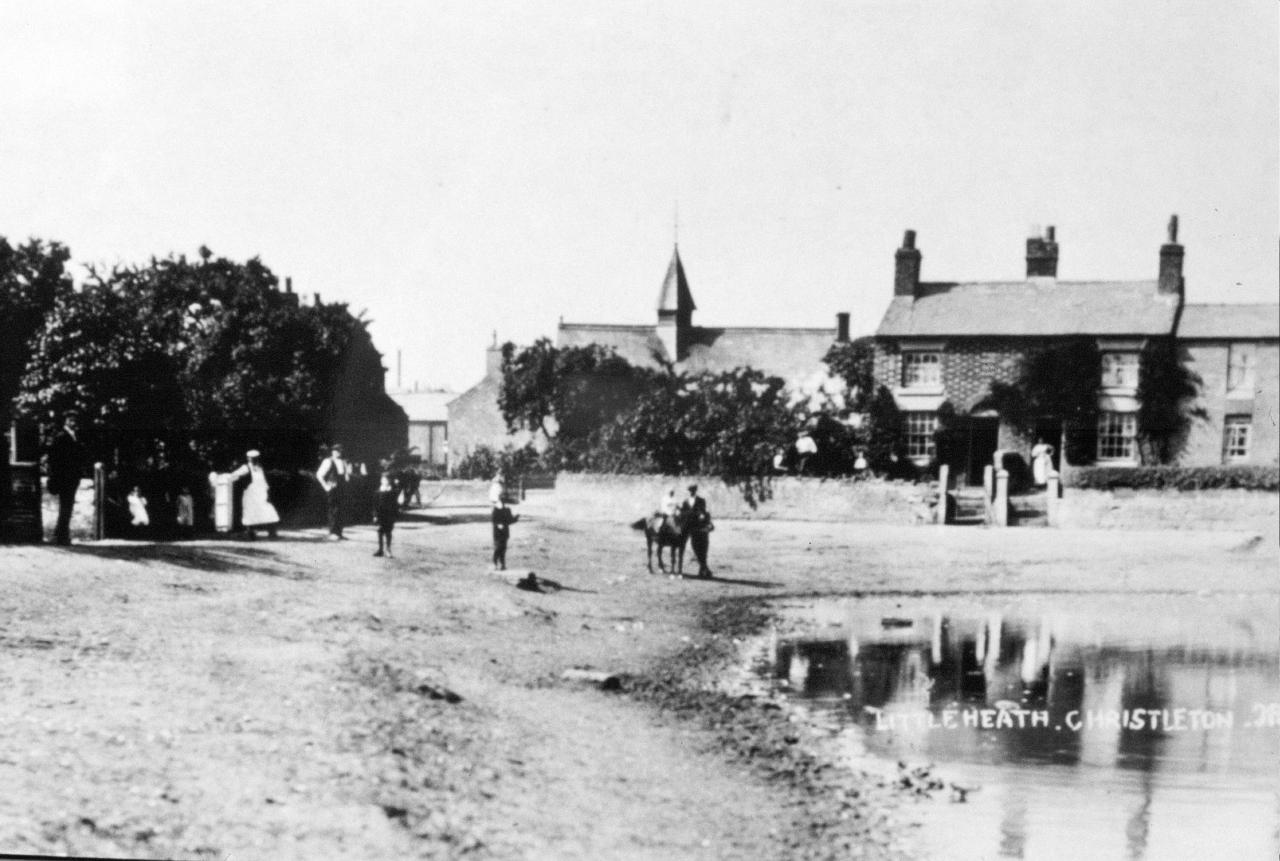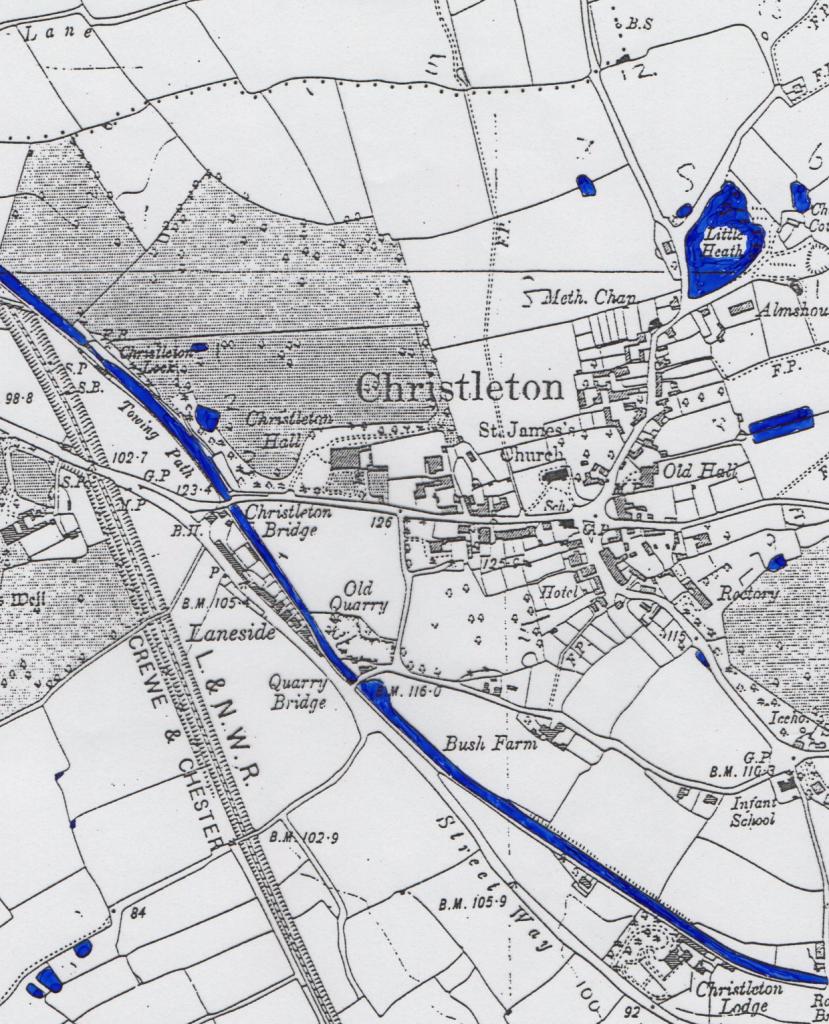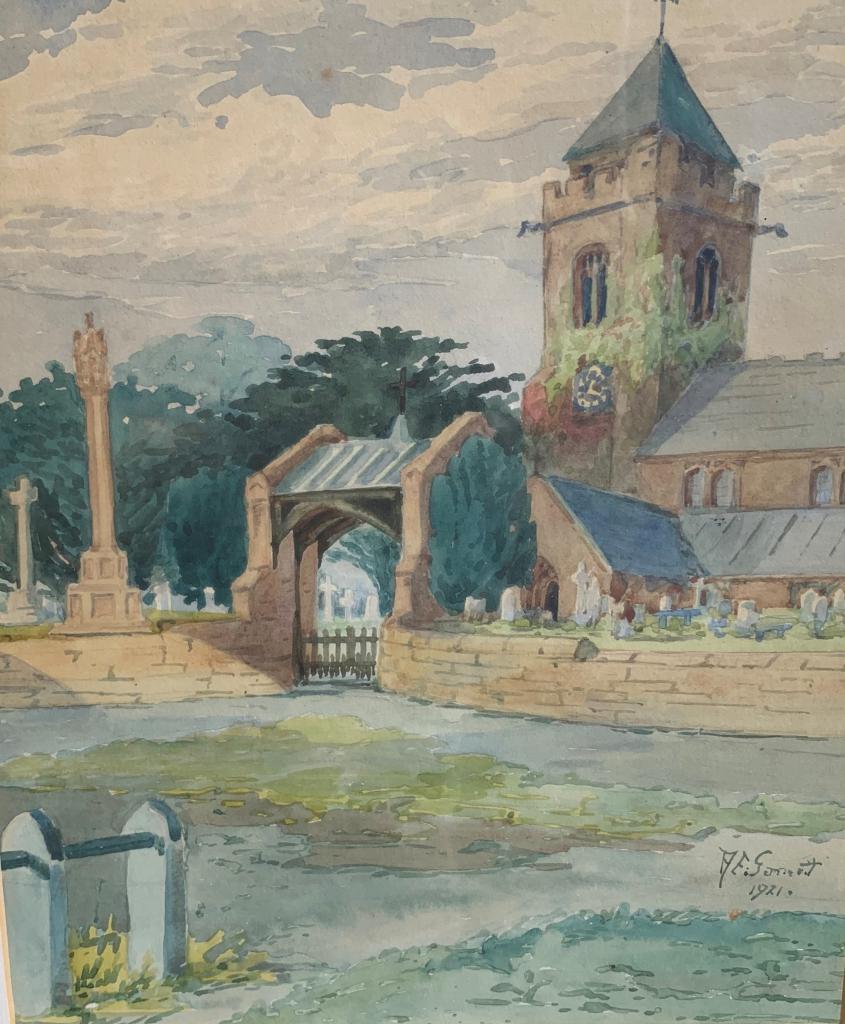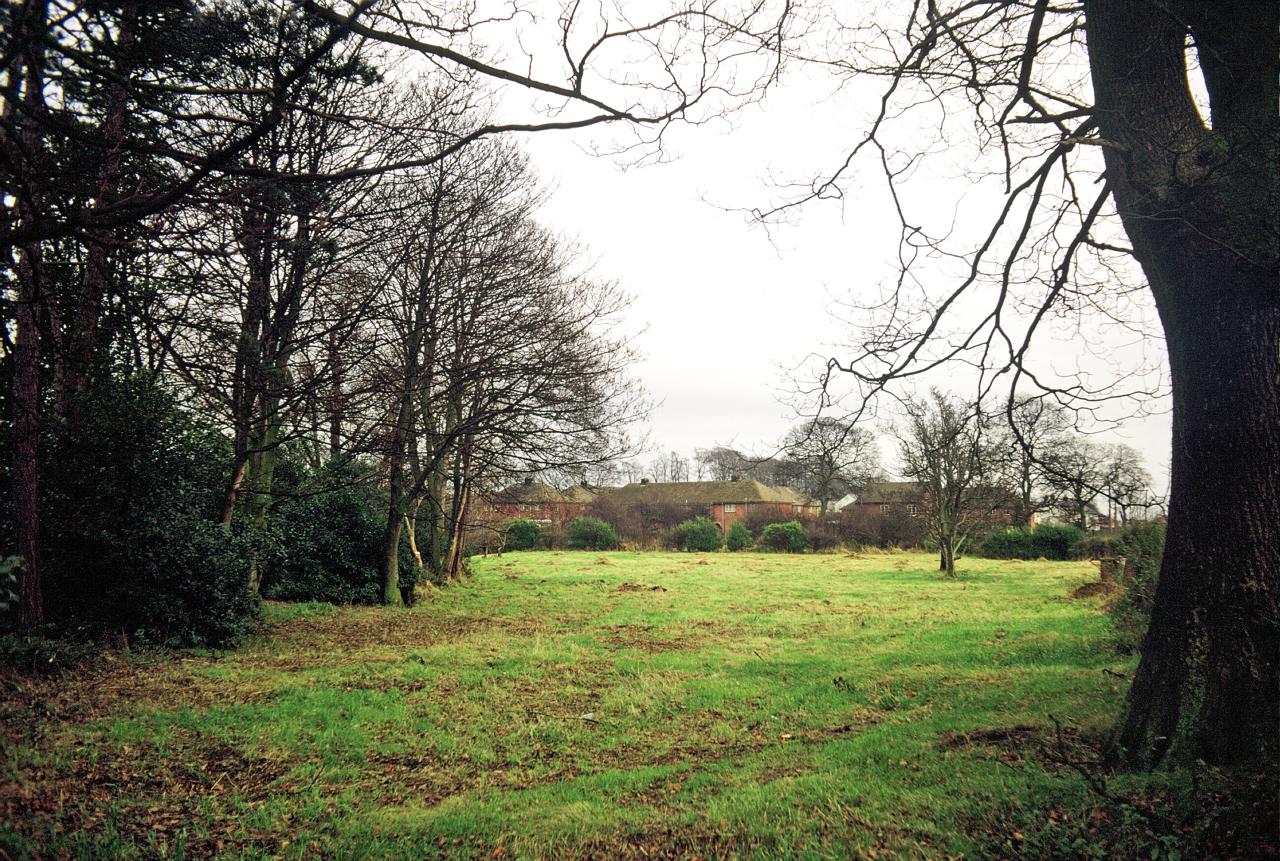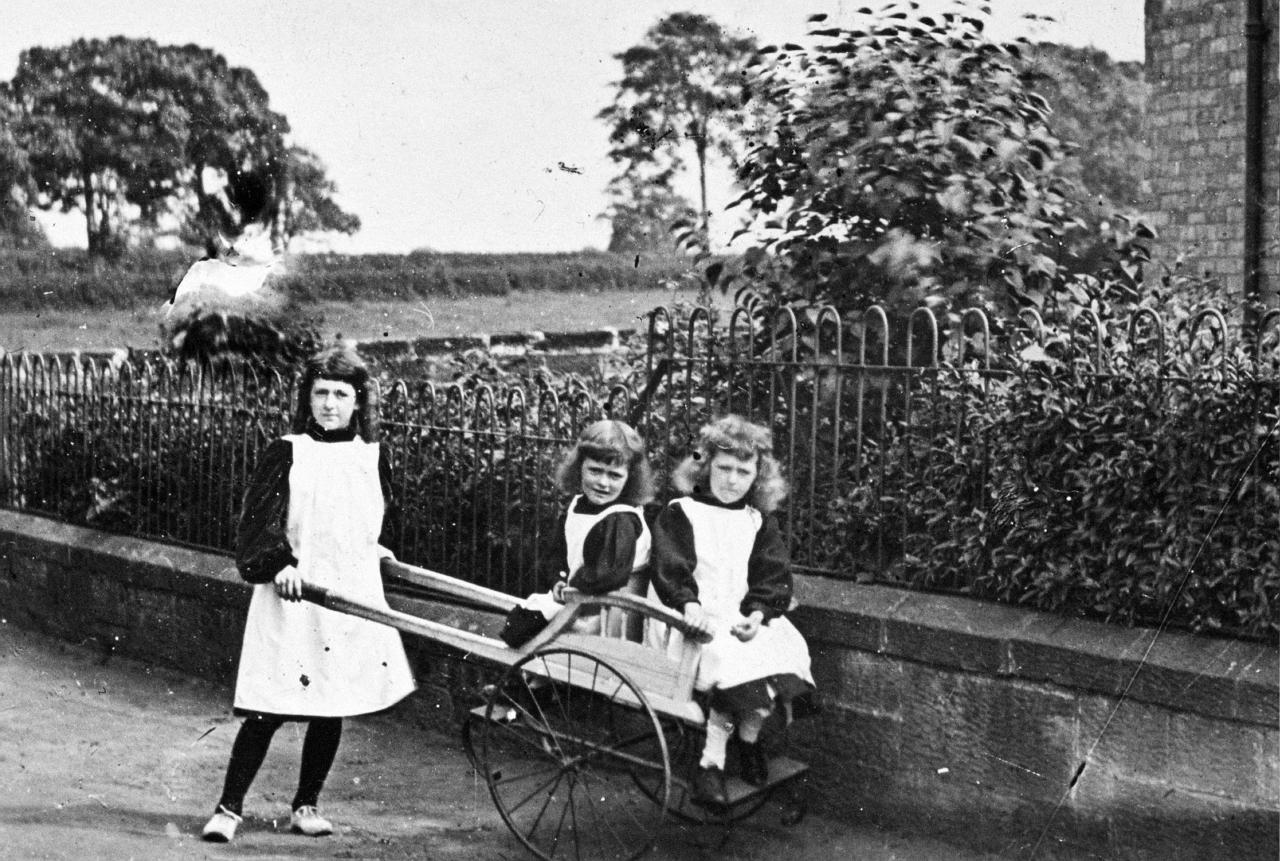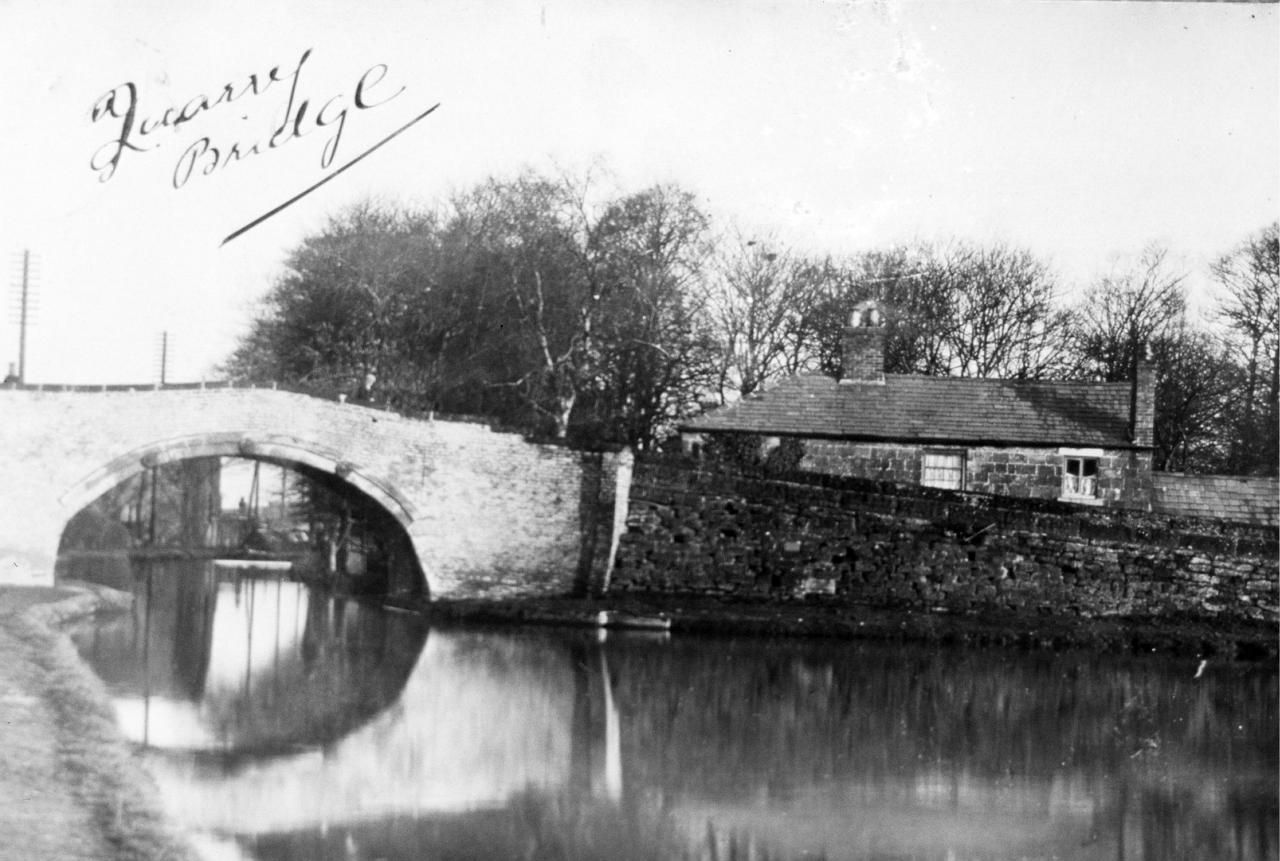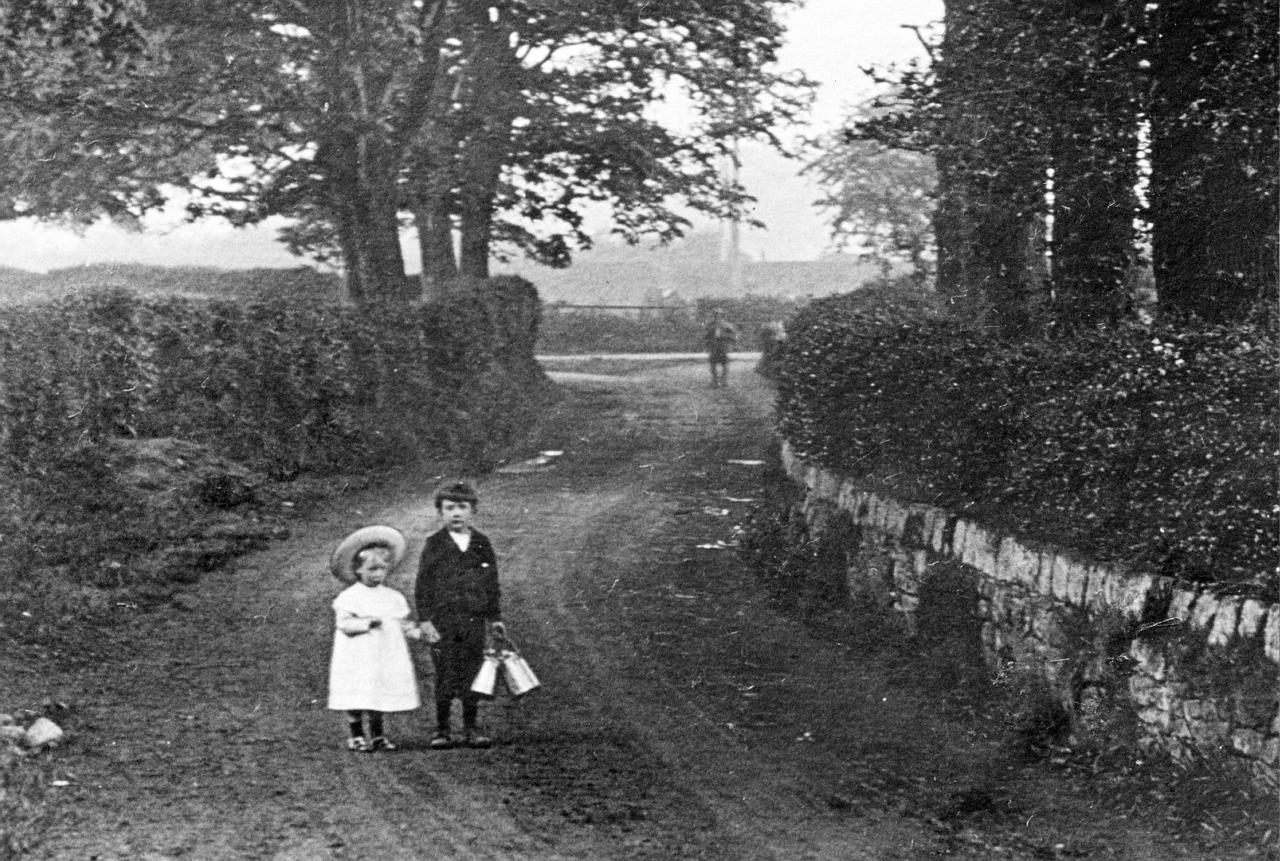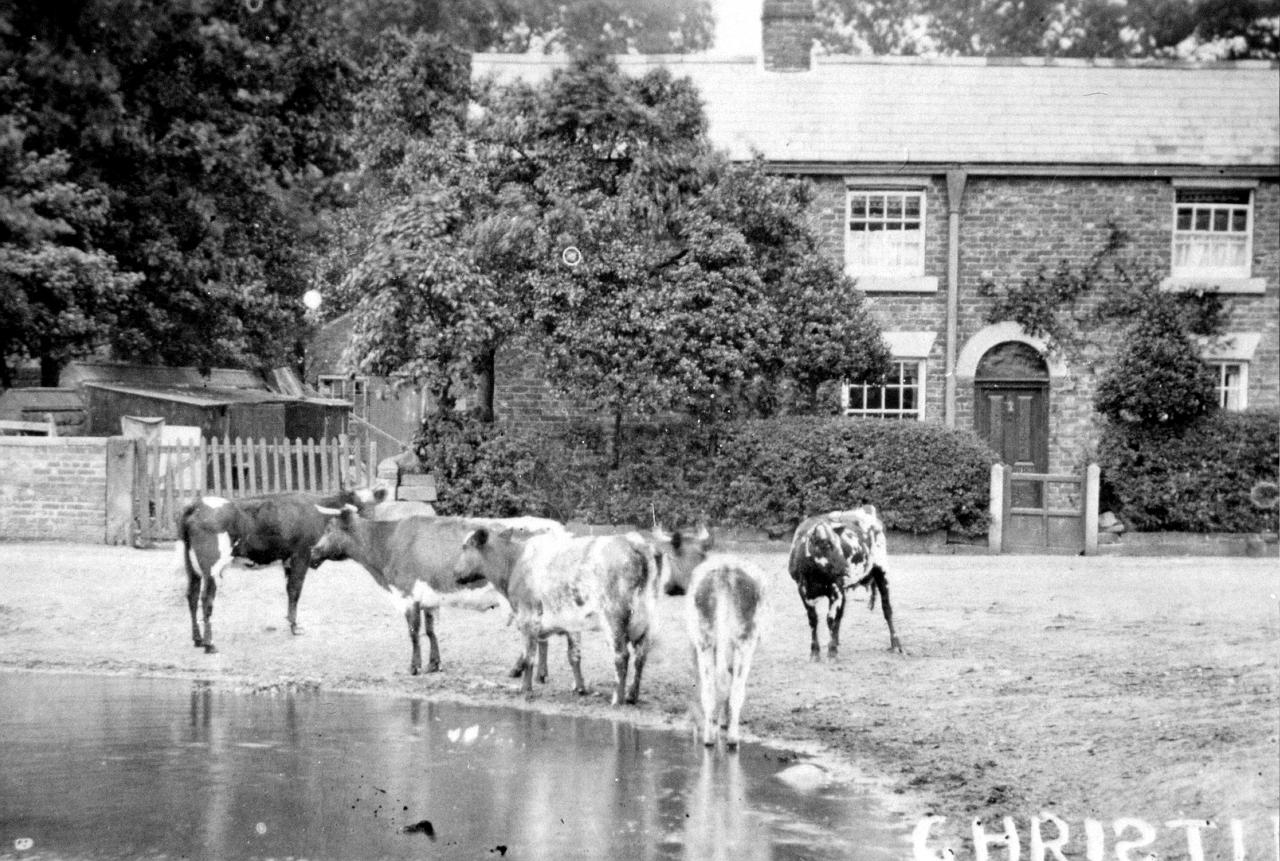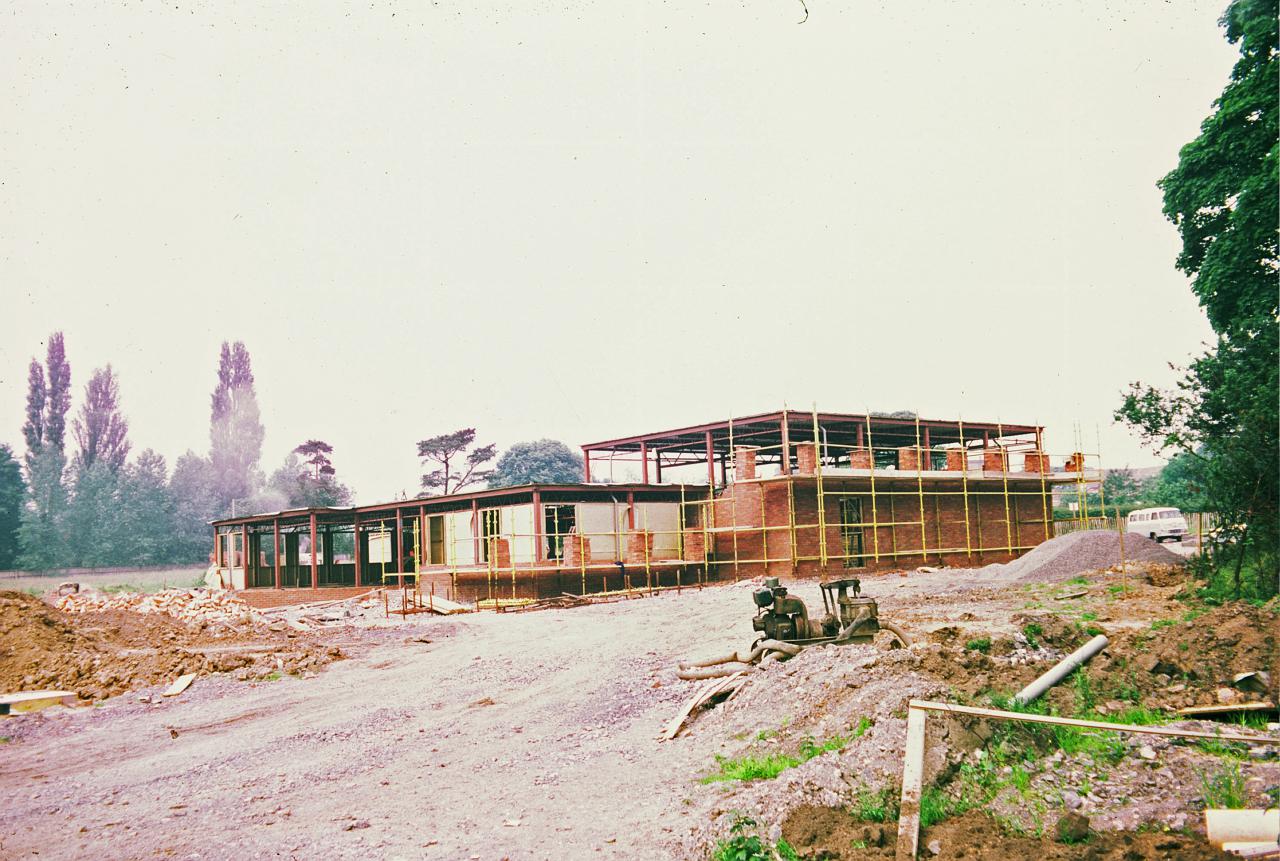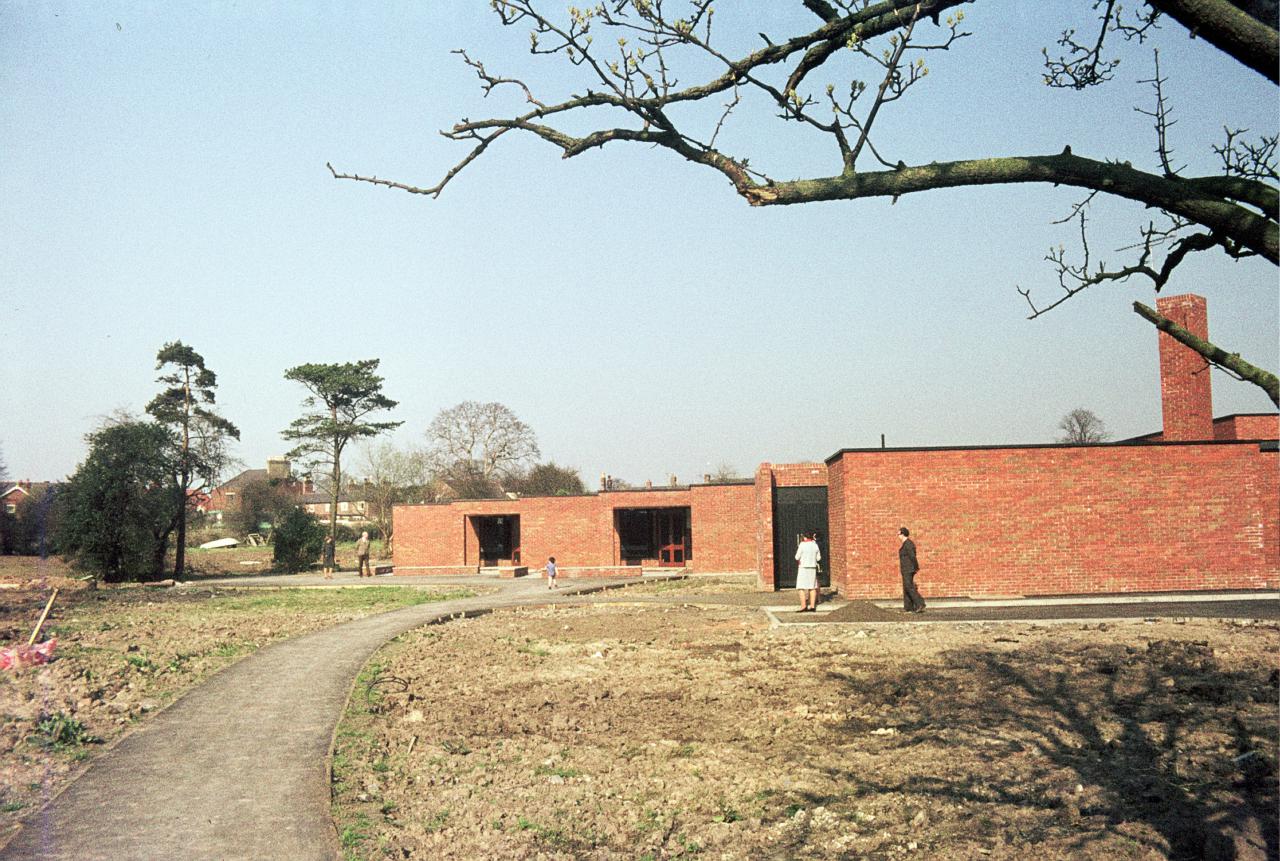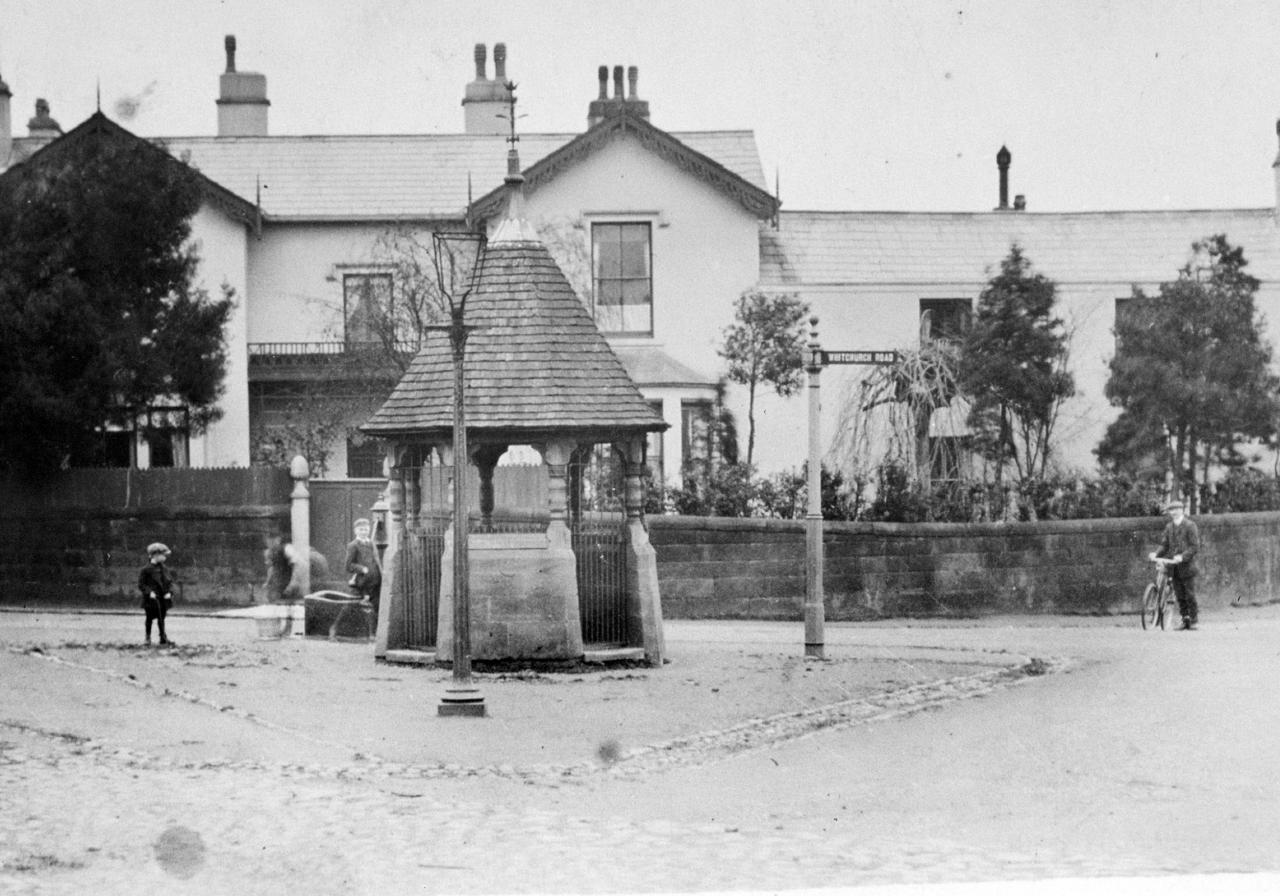
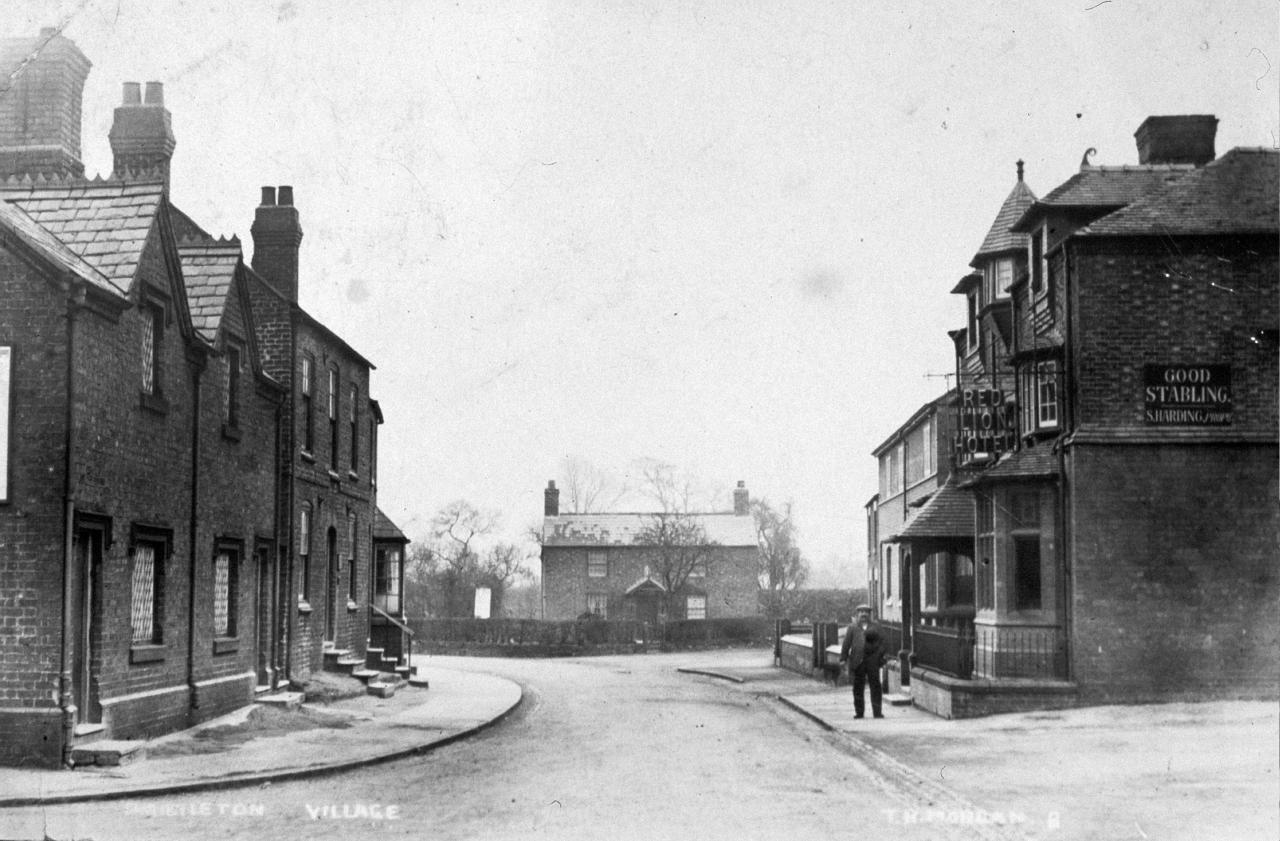
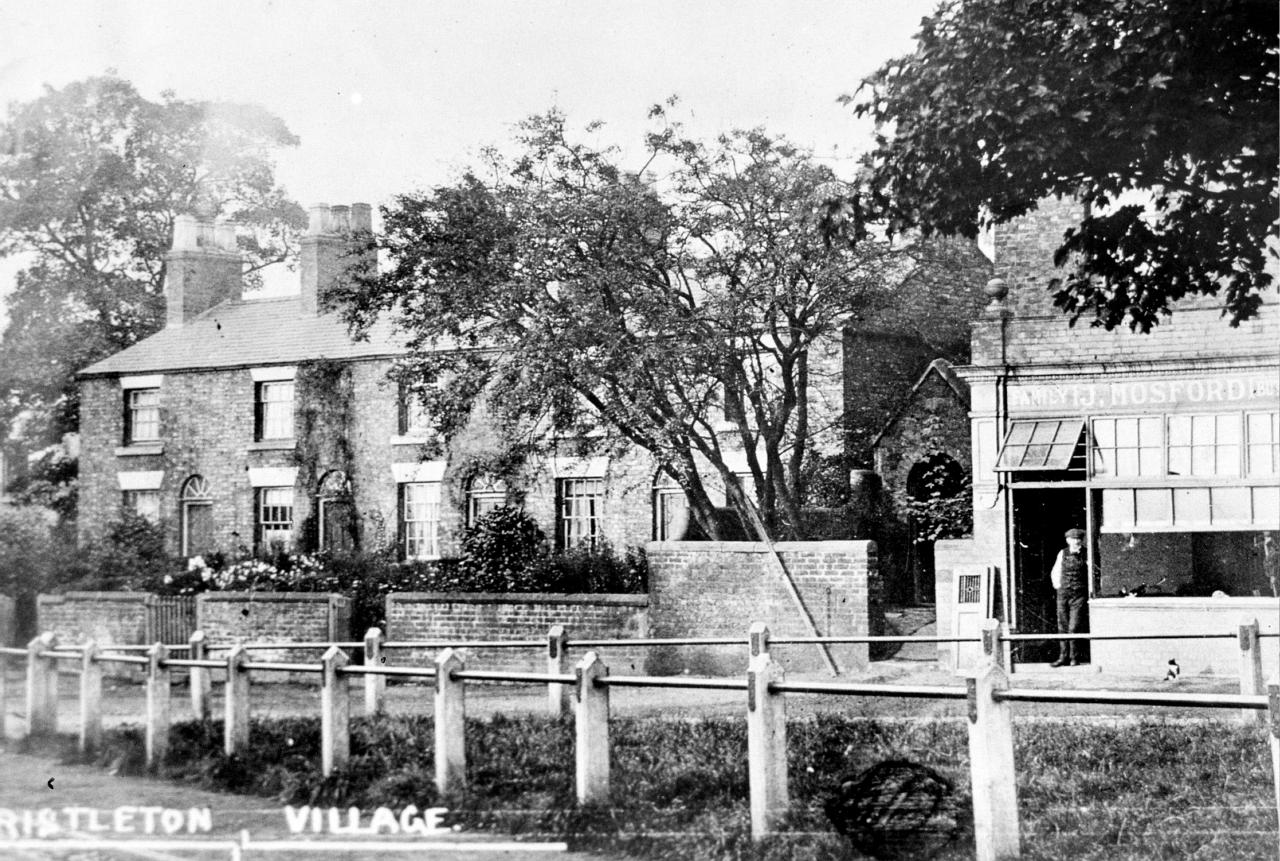
At daybreak you would hear the “Boaties” cracking their whips along the towpath, and the rooks in the wood, some 50 nests, would be cawing their heads off. You could hear dear old Joe Mosford, the butcher, chopping the meat on the block and the ring, ring of his brass scales when weighing it, often at 5.00am. Cows would be bellowing, and pigs squealing for their breakfast. The handle of the village pump hitting the sandstone trough, when operated by the early birds. Later in the day, Charlie Booth with a voice like a foghorn, shouting, “Rags and bones, bottle and jars, rabbit and skins.” Then the cockle and mussel man would arrive all the way from Parkgate, with his pony and flat topped cart, crying, “Shrimps, cockles and mussels, Dee fluke and samphion,” (an edible seaweed). Mrs Hewson with her Hurdy Gurdy would arrive all the way from Chester, just for a few coppers.
You were born at home whether you liked it or not. No ambulances dashing mum to hospital in those days. Nurse Ball, who lived in Quarry Cottages, would arrive on her old rusty bike dressed in her white starched apron and carrying her little black bag. In no time at all, you had a little brother or sister. Almost all we Christletontonians were born with the help of that little black bag.
Our village butchers were quite successful, having two shops in Chester Market. They had two or three fields and would purchase a number of cattle and sheep together and would turn them out to grass until required. Mr Joe Mosford was renowned as a judge of the weight of cattle on the hoof. Then sales of meat were conducted from the slaughter house. One slaughter house was situated in the middle of the Ring of Bell’s Car Park, and the killing and dressing of the meat went on from Monday to Thursday afternoon. It was then scrubbed down and converted into a shop for weekend sales.
The Iron Gate and sandstone posts at the side of the church, leading to the footpath to Littleton, are the originals used as the entrance to the old school, which was situated on the Green in front of the church. Later the present “Parish Hall” became the Boys’ School, but before that it wa a pub by the name of Ring O Bells. (The present Ring O Bells used to be called the Red Lion.) The gateposts to Birch Heath Lodge and High Walls have acorns on top of them. Canon Garnett’s widow told me that all four came from the old church building. She lived at The Green (now the Birch Heath Lodge Nursing Home) for several years, later at High Walls, and the last I remember of her was at the old Glass House just before the Second World War. She was a very interesting person who used to ramble around the village sketching. She once designed the front cover of the church magazine, I think.
“The new Primary School (Opened in 1974) stands on Hospital Field, Faulkner’s Farm, which we called The Croft. The gardens on either side of the stile footpath were also part of that field. The farmhouse and buildings were in front of the school buildings on Quarry Lane. Faulkner was sitting on the shaft of a heavy cart, which had enormous wheels, when, only 600 yards from the farm, the carthorse slipped and Faulkner was thrown under the wheels and killed. (Note. Frank has named the farmer as Faulkner, in fact it was Frederick William Mulliner. Frederick Mulliner his son, was killed on the Somme in 1916. The farm was called Quarry Bank Farm.) On the opposite side of the road was Bush Farm, one of the Lunts worked it. The house called Greystones is the original stable for Bush Farm. The land on the other side of Quarry Lane, now Woodfields, was the house field of Digger Swindley’s old farm, the 1653 one.
Digger’s house field was quite large, its border was from Village Road on one side and Quarry Lane on the other and went right up to the edge of the old Girls’ School front playground. Digger had an old black mare called Bellwell Rino. Gosh she was almost as old as the farm. She dropped dead one day in the house field and the vet was allowed to hold a post mortem. He found eight tennis balls in her tummy! The girls had lost the balls over the hedge, and the mare whose teeth were worn out, swallowed the long grass and the tennis balls without chewing. They buried Bellwell Rino in the field one dark night, and now Woodfields stands on top of her grave.
A cannon ball from the Civil war period was also found and that went into the museum. There were no houses in Quarry Lane except for two thatched cottages and the Girls School, and the lane was only half the present width. The Girls School was paid for by Mrs Ince. We all started down there in the Infants. Mrs Fleet was our motherly teacher and she was the blacksmith’s wife. Miss Huss was the straight laced spinster headmistress. At eight years of age we boys went up to the big lad’s school (The Boys’ School) Some sort of 11+ exam took place in the those days. Fred Aspinall was Headmaster then, and Sammy Earlam had preceded him. Morris Hullah came after Mr Aspinall, and Tom Solloway finished me off.
Note
Part three to follow in January 2022
LISTEN INSTEAD OF READING
-

Frank Poston in front of St. James', Christleton
-
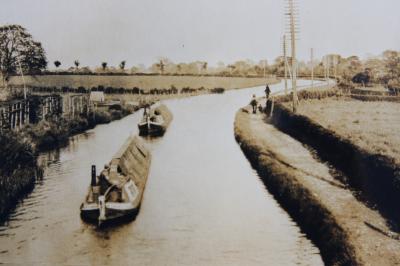
Boaties
-
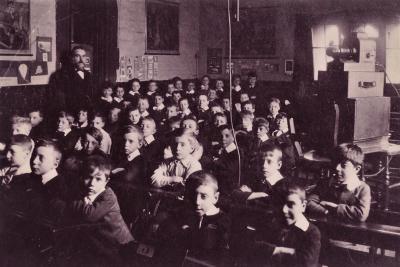
John Sellers School, Christleton
-
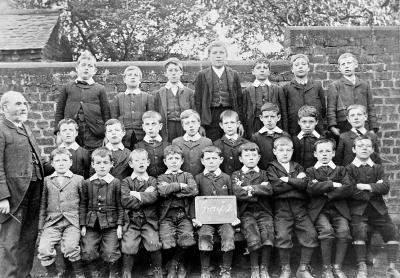
Boys School, Christleton
-
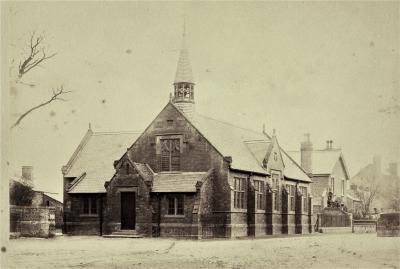
Boy's School, Christleton, now the Parish Hall
-
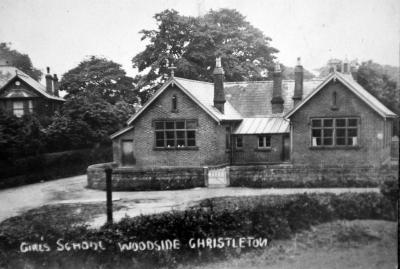
Girl's Infants School, Christleton
-

The Old Far, Village Road, Christleton
-

Poston Family
-

Digger Swindley at the Old Far, Christleton
-

Digger Swingdley
-
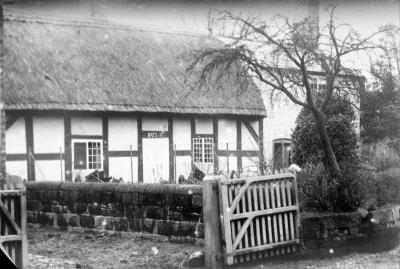
The Old Farm, Christleton
-

Christleto Village Centre in 1900's
-

Joe Mossford's, Christleton
-

The Old Rectory, Village Road, Christleton
-
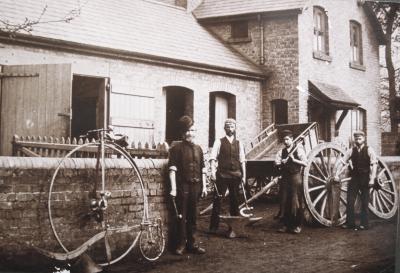
Christleton Smithy, 1908
-

Christleton Smith
-

The Blacksmith
-

Christleton Village Green and Butchers
-

Pit Farm and Piy, Christleton
-
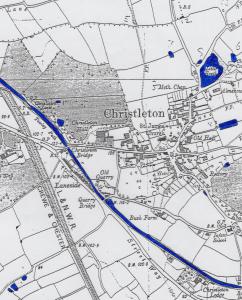
Map showing the village of Christleton in 1908
-

Mrs. Garnett's paiting of St. James, Christleton
-

Quarry Bank Farm site
-
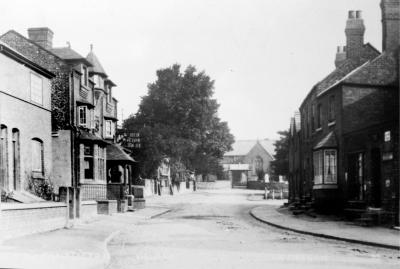
Red Lion
-

The Red Lion, Christleton
-

The Red Lion, Christleton in the winter of 1963
-

Quarry Land and Plough Lane, Christleton
-

Children in Quarry Lane, Christleton
-

Quarry Cottage, Christleton
-
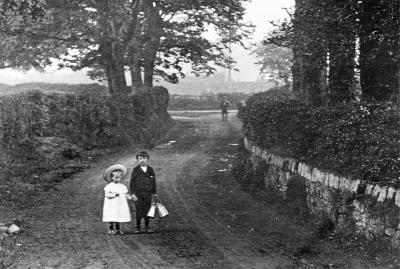
Children with milk jug
-

Christleton Pit and Cattle
-

-
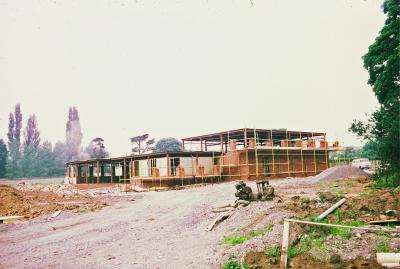
New Primary School being built in 1973
-

New Primary School early 1974


